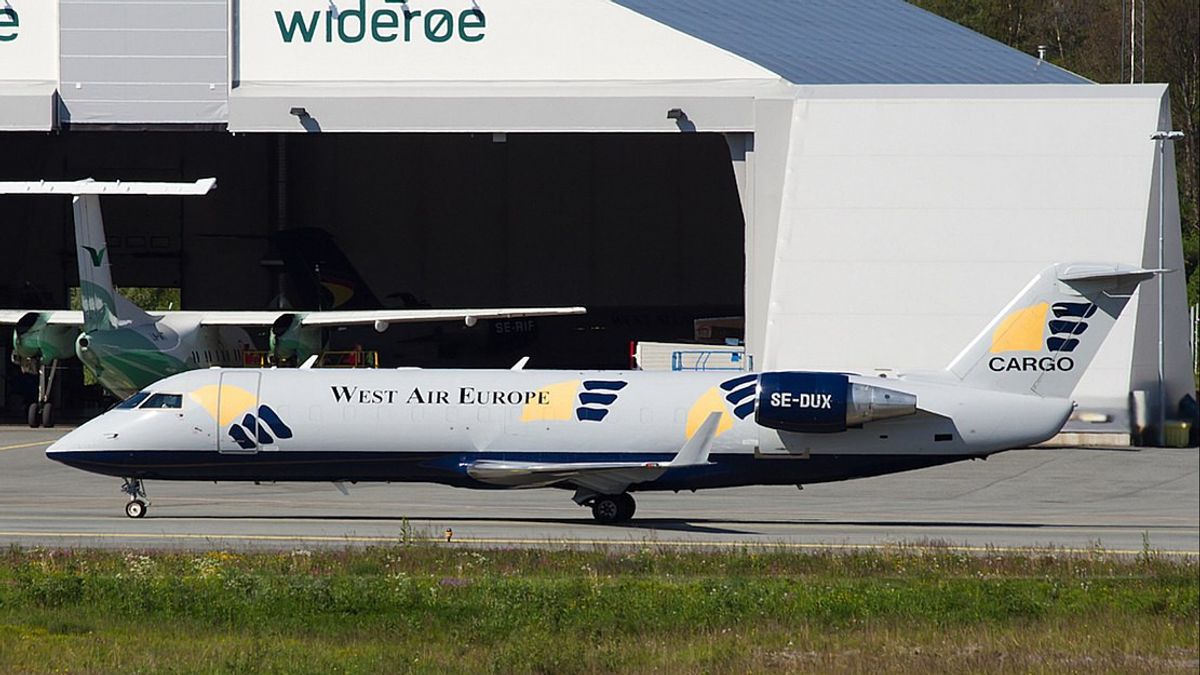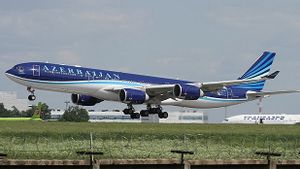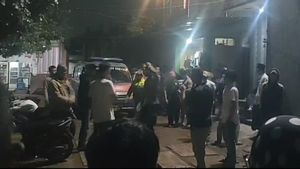JAKARTA - The fall of the Sriwijaya Air SJ-182 plane which fell from an altitude of 10,900 feet to 250 feet in less than a minute is similar to the West Air Sweden 294 plane crash that occurred five years ago. In that case, the plane took a steep 21,000 feet in just a minute. Then what is the cause of the accident?
The accident occurred on January 8, 2016 when a commercial cargo plane was flying from Oslo Airport, Norway to Tromso Airport. The plane that crashed was modeled CL-600-2B19 made by Bombardier Inc. The aircraft was operated by West Atlantic Sweden AB.
Initially the flight went smoothly at FL level 330 or 33 thousand feet. But when local time showed 19:20 things began to change. The weather at that time was so dark without moonlight, clouds, and no turbulence. The lack of external vision means that the pilot relies on the attitude indicator instrument in the cockpit.
After how long, according to an investigative report by the Swedish authorities SHK the pilots began to sound surprised because of a disturbance in their autopilot system. In addition, it is likely that the aircraft is also disconnected.
That's when the warning alarm started sounding. The pilot started to turn the nose down. In addition, the investigation revealed that the plane also experienced an angle of attack which resulted in a stall. This incident is similar to the Sriwijaya Air SJ 182 accident case.
"Ride!" shouted a co-pilot of the plane. They seemed to be trying to fly the plane back to its original altitude.
But the overspeed warning started beeping loudly. The plane had dived sharply past the maximum speed of more than 700 kilometers per hour for 17 seconds after the disturbance. One minute and twenty seconds after dropping from altitude, the plane hit the ground and both crew members were killed.
Based on an investigative report by the Swedish authorities SHK, showed there was no problem with the aircraft's operating control system. However, there is a wrong attitude in reading the attitude indicator, indicating that there is interference with the Inertial Reference Unit (IRU 1) navigation instrument.
In that incident there was ineffective communication between the pilot and the co-pilot. They had different perceptions when reading an emergency situation.
In addition, the results of the investigation show that the flight instrument system provides inadequate guidance due to malfunctions that occur with navigation issues. Therefore, it can be concluded that the accident was caused by inadequate operational prerequisites for managing system failure.
As a result of this accident, the Swedish authorities obliged the emergency call system to be revamped. This is mandatory throughout the commercial air transport industry.
Sriwijaya Air SJ 182 has a stall?Meanwhile, if you look at the initial symptoms of the Sriwijaya Air SJ 182 accident, it seems similar to the West Air Sweden 294 accident. Because according to Flightradar data it is suspected that the Sriwijaya Air SJ 182 plane stalled before taking a sharp dive.
Flightradar data shows that at 14:40 WIB the plane dived from 10,900 feet to 250 feet in less than a minute after traveling about four minutes from Jakarta. After that the ADS-B signal disappeared from the plane.
Stall, according to Deborah Balter in her book Aeronautical Dictionary is one of the flight malfunctions. This situation is prone to occur early in the departure, starting from taking off, gaining altitude, to maneuvering.
The word Balter stall is usually triggered by two things. First, because of the difference in the angle between the airplane wings and the wind flow. This difference is called the Angle of Attack.
Stall prone occurs when the Angle of Attack is too large, usually exceeding 15 degrees. In this case, in principle the aircraft is specially designed to be able to fly even at a speed of 280 kilometers per hour.
This is possible because the aircraft's wings have the ability to turn the air down. That's what makes the fuselage lift.
However, there are conditions. This physical function can only occur if air flows to the rear of the wing surface. To put it simply, an airplane is climbing too fast when stall conditions occur.
Apart from physical malfunctions, a stall can also occur if the liquid in the plane's gas pipe gets stuck. This condition is called vapor lock.
The English, Chinese, Japanese, Arabic, and French versions are automatically generated by the AI. So there may still be inaccuracies in translating, please always see Indonesian as our main language. (system supported by DigitalSiber.id)










